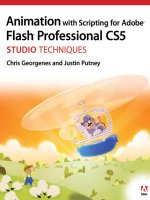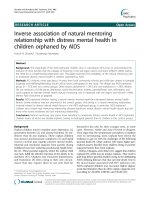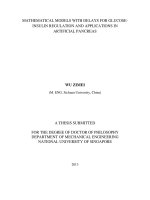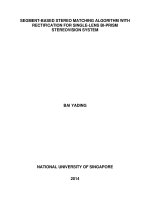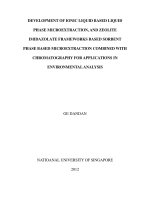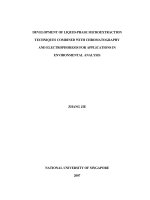Ten-year experience with standardized non-operating room anesthesia with Sevoflurane for MRI in children affected by neuropsychiatric disorders
Bạn đang xem bản rút gọn của tài liệu. Xem và tải ngay bản đầy đủ của tài liệu tại đây (533.95 KB, 8 trang )
Mongodi et al. BMC Anesthesiology
(2019) 19:235
/>
RESEARCH ARTICLE
Open Access
Ten-year experience with standardized
non-operating room anesthesia with
Sevoflurane for MRI in children affected by
neuropsychiatric disorders
Silvia Mongodi1* , Gaia Ottonello2, Raffaelealdo Viggiano3, Paola Borrelli4, Simona Orcesi5,6, Anna Pichiecchio7,8,
Umberto Balottin5,6, Francesco Mojoli1,3 and Giorgio Antonio Iotti1,3
Abstract
Background: Children require anesthesia for MRI to maintain immobility and reduce discomfort; clear indications
about the best anesthesiologic management are lacking and each center developed its own protocol. Moreover,
children with neuropsychiatric disorders more likely require sedation and are described in literature as more prone
to general and respiratory complications. Aim of this study was to analyze the applicability of a sevoflurane-based
approach, to describe general and respiratory complications and to identify risk factors in a pediatric neuropsychiatric
population.
Methods: Retrospective cohort study, university Hospital (January 2007–December 2016). All the 1469 anesthesiologic
records of children addressed from Neuropsychiatric Unit to undergo MRI under general anesthesia were analyzed; 12
patients equal or older than 18-year-old were excluded. We identified post-hoc nine macro-categories: static
encephalopathies, metabolic/evolutive encephalopathies, epileptic encephalopathies, neuromuscular diseases, autistic
spectrum disorders, migraine, psychiatric disorders, intellectual disabilities, others. A logistic regression model for events
with low frequency (Firth’s penalized likelihood approach) was carried out to identify the mutually adjusted effect
among endpoints (complications) and the independent variables chosen on the basis of statistical significance
(univariate analysis, p ≤ 0.05) and clinical judgment.
Results: Of 1457 anesthesiologic records (age 4.0 (IQR 2.0 to 7.0) year-old, males 891 (61.2%), weight 17.0 (IQR 12.0 to
24.9) kg), 18 were cancelled for high anesthesiologic risk, 50 were cooperative, 1389 were anesthetized. A sevofluranebased anesthesia was feasible in 92.3%; these patients required significantly less mechanical ventilation (8.6 vs. 16.2%;
p = 0.012). Complications’ rate was low (6.2%; 3.1% respiratory). The risk for general complications increases with ASA
score > 1 (OR 2.22, 95 CI% 1.30 to 3.77, p = 0.003), male sex (OR 1.73, 95% CI 1.07 to 2.81, p = 0.025), multi-drug
anesthesia (OR 2.98, 95 CI% 1.26 to 7.06, p = 0.013). For respiratory complications, it increases with ASA score > 1
(OR 2.34, 95 CI% 1.19 to 4.73, p = 0.017), autumn-winter (OR 2.01, 95 CI% 1.06 to 3.78, p = 0.030), neuromuscular
disorders (OR 3.18, 95 CI% 1.20 to 8.41, p = 0.020). We had no major complications compromising patients’
outcome or requiring admission to ICU.
Conclusions: Sevoflurane anesthesia is feasible and safe for children affected by neuropsychiatric disorders
undergoing MRI. Specific risk factors for general and respiratory complications should be considered.
Keywords: Non-operating room anesthesia, MRI sedation, Neuropsychiatric disorders anesthesia, Sevoflurane,
NORA
* Correspondence: ;
1
Anesthesia and Intensive Care, Rianimazione 1 Fondazione IRCCS Policlinico
S. Matteo, 27100 Pavia, Italy
Full list of author information is available at the end of the article
© The Author(s). 2019 Open Access This article is distributed under the terms of the Creative Commons Attribution 4.0
International License ( which permits unrestricted use, distribution, and
reproduction in any medium, provided you give appropriate credit to the original author(s) and the source, provide a link to
the Creative Commons license, and indicate if changes were made. The Creative Commons Public Domain Dedication waiver
( applies to the data made available in this article, unless otherwise stated.
Mongodi et al. BMC Anesthesiology
(2019) 19:235
Background
Pediatric patients frequently require sedation for medical
procedures to reduce pain and stress, or to maintain immobility. In the case of magnetic resonance imaging
(MRI), image quality is significantly improved by complete
stillness [1].
Since 1985, scientific societies emanated guidelines to
perform pediatric non-operating room anesthesia
(NORA), in order to reduce complications [2]. In the last
International Guidelines update in 2016 [3] and in the
2019 clinical practice statement from the European Society of Paediatric Anaeshesiology [3], many aspects of
pediatric NORA are detailed, as anesthesia record, monitoring, setting and dedicated personnel’s competences in
function of the expected level of sedation. However, no
clear indication on the most appropriate pharmacological approach is reported [3–5] and each center developed its own protocol [6–17]. Different pharmacological
approaches have specific drawbacks, as high failure rate
and poor predictability (chloral hydrate [6–9], dexmedetomidine [10, 11], thiopental [9], midazolam [7]),
hemodynamic side effects (dexmedetomidine [10, 11]),
prolonged awakening (midazolam [7], chloral hydrate
[6–9]) and respiratory drive depression (propofol [11–
15]). Sevoflurane presents extremely good results in
term of success of sedation, safety and manageability,
but is mainly described in infants [16, 17].
Moreover, children affected by neuropsychiatric disorders are considered at higher risk of anesthesiologic complications [18]. A higher rate of pulmonary complications
was in fact described by Cravero et al. [13] in children
with a higher American Society of Anesthesiology (ASA)
status; a large proportion of this population was affected
by neurological disorders. Children affected by developmental disabilities and neurologic disorders seem to be
more prone to anesthesia-related respiratory complications when compared to healthy children, notably in terms
of airway compromise [19]. This may in part be explained
by a reduced oro-pharyngeal airway diameter when compared to general pediatric population [20]. A variety of
genetic diseases has been described at higher risk of sedation/anesthesia complications [21]. A higher sensitivity to
both inhaled anesthetics [22] and opioids [23] has also
been described in cerebral palsy.
Among neuropsychiatric disorders, neuromuscular diseases are considered at the highest risk of perioperative respiratory complications since they may affect respiratory
muscles strength either directly by muscle fibres weakening or indirectly by degenerative nerve supply and neuromuscular junction weakness [24–26]. A careful and
multidisciplinary pre-anesthesia assessment is in general
recommended [27, 28]. Moreover, such diseases are considered at high risk of specific anesthesiologic complications as malignant hyperthermia or rhabdomyolysis, in
Page 2 of 8
particular after inhaled anesthetics’ administration [24,
29].
As in other institutions, in our center we systematically applied a standardized approach with sevofluranebased NORA as described in infants and neonates [16,
17], eventually associated to premedication with midazolam, in spontaneous breathing. However, in literature
evidence is lacking on the applicability, rate of complications and risk factors for such anesthesiologic approach
in children.
Aim of this study was to analyze a ten-year experience
of pediatric NORA for MRI performed with a standardized sevoflurane-based approach in children affected by
neuropsychiatric disorders, focusing on applicability of the
approach, anesthesia management, rate of general and respiratory complications and risk factors’ identification.
Methods
Ethical approval for this study (Ethical Committee N° P20170030606) was provided by the Ethical Committee
NAC of Fondazione IRCCS Policlinico S. Matteo University
Hospitals, Pavia, Italy (Chairperson Prof M. Cazzola) on
December 5th, 2017; the need for written consent was
waived by the ethics committee.
We retrospectively enrolled all patients addressed from
Pediatric Neuropsychiatric Unit of Fondazione Mondino
IRCCS, a university Italian neurological hospital, to
undergo MRI under general anesthesia (GA) from January
2007 to December 2016. We excluded from final analysis
patients equal or older than 18-year-old. Data were collected from anesthesia records. A simplified classification
of neuropsychiatric disorders was performed post-hoc;
nine macro-categories were identified: static encephalopathies (cerebral palsy, syndromic-genetic disorders, malformative diseases), metabolic/evolutive encephalopathies
(leukodystrophies, grey substance diseases, mitochondrial
diseases), epileptic encephalopathies, neuromuscular diseases, autistic spectrum disorders, migraine, psychiatric
disorders, intellectual disabilities, others. In particular, we
focused our attention on children affected by neuromuscular diseases, being more exposed to respiratory complication [24–30].
Standardized sevoflurane-based NORA
Anesthesia team is composed by two intensivistanesthesiologists and one MRI nurse; the hospital is neurological only and no other medical-emergency team is available. Standard practice consists in sevoflurane-based
anesthesia induction and maintenance, obtained with sevoflurane inhaled by a reservoir bag mask at 8.0 and 2.5% respectively. Anesthetic gas was delivered by a Drager Fabius©
machine and dispersion was prevented by a canopy and aspiration system. If a premedication is indicated, midazolam
(0.1 mg/kg administered intramuscularly (IM) 30 min before
Mongodi et al. BMC Anesthesiology
(2019) 19:235
anesthesia) is administered. Anesthesiologist is free to leave
the standard approach, if required according to preanesthesia evaluation. After induction, airways’ patency is
judged on the basis of respiratory thoracic excursion, peripheral oxygen saturation and expiratory CO2 monitoring (capnography) as measured by nasal and/or oral sampling lines.
If airways’ patency is judged satisfactory, the patient is maintained in spontaneous breathing, either spontaneously or
with an oral cannula, with inhaled sevoflurane by bag mask.
Otherwise a laryngeal mask airway (LMA) is electively placed
and positive pressure ventilation in a closed circle system
started by the same Drager Fabius© machine. Oro-tracheal
intubation set is also available. We consider loss of airways
patency as a complication in patients with altered capnography or desaturation after the induction phase. A cervical collar is frequently placed to prevent head involuntary
movements, eventually impairing image quality. A peripheral
vein catheter is placed under GA and glucose 5% 20 ml/h administered to prevent hunger symptoms from fasting at
awakening. Italian recommendations for fastening were
followed [5]. Vital parameters are continuously monitored by
an MRI-compatible monitor and manually noted on
anesthesia record every 10 min; all adverse events and associated procedures (i.e. procedures performed under GA after
MRI) are also noted. Discharge criteria are a child fully awake
or equal to pre-induction status and stable vital parameters.
Statistical analysis
Mean values and standard deviations (SD) or median
and interquartile range (IQR) were used for the quantitative variables, and percentages for the categorical ones.
Normal distribution was assessed by Shapiro-Wilk test.
Primary end-point was the applicability of the
sevoflurane-based approach, as measured by the percentage of anesthesia conducted with the standardized
approach.
Secondary end-points were: to identify differences between standard and non-standard anesthesia, in terms of
patients’ characteristics, anesthesia characteristics and
need of mechanical ventilation; to describe anesthesiologic management in this specific population in terms of
anesthetic drugs for induction and maintenance, need of
mechanical ventilation and associated factors, indication
to additional procedures during MRI anesthesia, length
of anesthesia and time for full recovery; to measure the
rate of general and respiratory complications and associated risk factors.
Comparisons among the categorical variables were
evaluated with the Pearson chi-square test; Fisher’s exact
test and Student’s T Test for independent data or Wilcoxon/Mann-Whitney U-test were used for quantitative
variables.
To evaluate the associations between endpoint variable
(development of complications during the procedure)
Page 3 of 8
and the patients characteristics / anesthesia management, odds ratios (ORs) and the corresponding 95% confidence interval (CI) were calculated. Given the limited
number of cases with complications (general and respiratory complications), a logistic regression model for
events with low frequency (Firth’s penalized likelihood
approach) was carried out to identify the mutually adjusted effect among endpoints and the independent variables chosen on the basis of the statistical significance
(univariate analysis, p ≤ 0.05) and of the clinical judgment; age and sex were used as adjusting variables. Pvalue ≤0.05 was considered significant (two-sided). All
the analyses were conducted with STATA/SE for Macintosh, version 14.2.
Results
Population
We analyzed 1457 records of 1268 patients addressed by
Pediatric Neuropsychiatric Unit, having excluded 12 patients older or equal to 18-year-old (Fig. 1); 137 patients
underwent MRI under GA more than once. Population
characteristics are reported in Table 1. 18 procedures
were cancelled for high anesthesiologic risk, 50 MRI
were performed with no anesthesia,1389 MRI were performed under GA.
Standardized sevoflurane-based NORA: applicability and
features
Characteristics of the 1389 GA are reported in Table 2.
92.9% of anesthesia were performed as standardized.
Sevoflurane was used as the induction drug in 93.3% of
cases at a median dose of 8.0% (IQR 2.5 to 8.0). Much
less frequently, propofol (4.7%), midazolam (1.3%), ketamine (0.6%) or thiopental (0.1%) were used. A standard
premedication with midazolam IM with a median dose
of 0.10 [0.09 to 0.11] mg*kg− 1 was added in 81.0% of
cases (Table 2).
Standardized sevoflurane-based anesthesia was significantly less used in children affected by neuromuscular
diseases (61.4 vs. 94.7%; p < 0.001) and required significantly less mechanical ventilation when compared to the
other pharmacological approaches (8.6 vs. 16.2%; p =
0.012).
Anesthesia features and management
Overall, in 96.7% of cases a mono-pharmacological approach (i.e. the same anesthesiologic drug for both induction and maintenance) was preferred (sevoflurane
96.0%, propofol 3.0%, ketamine 0.4%, midazolam 0.5%,
thiopental 0.1%).
Among the 9.1% of ventilated patients, only one was
intubated, all the others received an LMA. Patients of
male sex (10.6 vs. 6.8%; p = 0.016), with ASA score > 1
(16.3 vs. 8.1%; p < 0.001), undergoing a non-sevoflurane-
Mongodi et al. BMC Anesthesiology
(2019) 19:235
Page 4 of 8
Fig. 1 Diagram of patient recruitment
Table 1 Characteristics of the enrolled population
1457 Anesthesiologic records
Age, median [IQR], years
4.0 [2.0–7.0]
Males, No. (%)
891 (61.2%)
Weight, median [IQR], kg
17.0 [12.0–24.9]
ASA score, No. (%)
based anesthesia (16.2 vs. 8.6%; p = 0.012) and affected
by neuromuscular disease (22.8 vs. 8.6%; p < 0.001) were
significantly more frequently ventilated.
Overall, additional procedures (lumbar puncture, venous/arterial blood sample, other imaging, evoked acoustic potentials, muscular biopsy, electromyography) were
associated in 16.9% of cases.
Median anesthesia length was 50 (IQR 40 to 60) minutes. Median time for full recovery was 15 (IQR 10 to
20) minutes; it was not affected by the length of GA or
patients’ characteristics but was significantly longer in
mechanically ventilated patients (20 (IQR 15 to 30) vs.
15 (IQR 10 to 20) minutes; p < 0.0001) and in patients
with respiratory complications (20 (IQR 15 to 25) vs. 15
(IQR 10 to 20) minutes; p = 0.0236).
1
1267 (87.0)
2
171 (11.7)
3
19 (1.3)
4
0 (0)
General and respiratory complications
5
0 (0)
We registered 86 complications (6.2%): 43 respiratory
complications (50.0%), 13 post-operative nausea and
vomiting (15.1%), 10 hiccup (11.6%), 8 agitation (9.3%), 5
seizures (5.8%), 4 bradycardia (4.7%), 1 extravasation of
glucose 5% (1.2%), 1 prolonged awakening (1.2%) and 1
inadequate sedation (1.2%). Among the 43 respiratory
complications, we observed 23 airways obstructions
(53.5%), 10 laryngospasms (23.3%), 5 depressions of the
central respiratory drive (11.6%), 3 bronchospasms
(7.0%) and 2 cough and hyper-salivation (4.7%).
We found statistically significant differences for general complications in ASA score, age, sex, the choice of
a multi-pharmacological anesthesia and anesthesia
length superior to 50 min, and for respiratory complications in ASA, a diagnosis of neuromuscular diseases and
season autumn-winter (Table 3). A lower frequency of
Under chronic pharmacological treatment, No. (%)
475 (32.6)
Diagnostic category, No. (%)
Static encephalopathies
492 (33.8)
Autistic spectrum disorders
164 (11.3)
Intellectual disabilities
93 (6.4)
Metabolic / evolutive encephalopathies
66 (4.5)
Epileptic encephalopathies
64 (4.4)
Neuromuscular diseases
63 (4.3)
Other psychiatric disorders
49 (3.4)
Migraine
27 (1.8)
Others
418 (28.7)
Missing data
21 (1.4)
IQR: Inter-quartile range
Mongodi et al. BMC Anesthesiology
(2019) 19:235
Page 5 of 8
Table 2 Characteristics and complications of the MRI
conducted under general anesthesia
1389 MRI conducted under general anesthesia
Premedication, No. (%):
Midazolam
1134
1126 (99.3)
Atropine
4 (0.3)
Ketamine
2 (0.2)
Midazolam + atropine
1 (0.1)
Midazolam + atropine + ketamine
1 (0.1)
Induction, No. (%):
Sevoflurane
1296 (93.3)
Propofol
66 (4.7)
Midazolam
18 (1.3)
Ketamine
8 (0.6)
Thiopental
1 (0.1)
Maintenance, No. (%):
Sevoflurane
1314 (94.6)
Propofol
51 (3.7)
Midazolam
6 (0.4)
Ketamine
5 (0.4)
Thiopental
1 (0.1)
None
12 (0.8)
Spontaneous breathing, No. (%)
1262
Oral cannula
334 (26.5)
Cervical collar
809 (64.1)
Mechanical ventilation, No. (%):
127
LMA
126 (99.2)
Oro-tracheal tube
1 (0.8)
Anesthesia length, median [IQR], minutes
50 [40–60]
Recovery length, median [IQR], minutes
15 [10–20]
MRI Magnetic resonance imaging; SpO2 Pulsed-oxygen saturation; NIBP Noninvasive blood pressure; EtCO2 End-tidal carbon dioxide; Et-sevoflurane endtidal sevoflurane; EKG electrocardiogram; LMA Laryngeal mask airway; IQR
Inter-quartile range. PONV Perioperative nausea and vomiting
general complications in sevoflurane-based NORA is
also observed, although it does not reach the statistical
significance (5.9 vs. 10.1%; p = 0.095).
Table 4 shows the results of crude and adjusted ORs
for general complications and respiratory complication
development. The penalized logistic regression used as
independent variables for general complications ASA
score, multi-pharmacological anesthesia and anesthesia
length superior to 50 min and for respiratory complications ASA score, presence of a neuromuscular disease,
anesthesia length superior to 50 min and season
autumn-winter; they were adjusted for age and sex. The
risk for general complications increases with ASA
score > 1 (OR 2.22, 95 CI% 1.30 to 3.77, p = 0.003), in
male patients (OR 1.73, 95 CI% 1.07 to 2.81, p = 0.025)
and in patients undergoing anesthesia with more than
one drug (OR 2.98, 95 CI% 1.26 to 7.06, p = 0.013). For
respiratory complications, the risk increases with ASA
score > 1 (OR 2.34, 95 CI% 1.19 to 4.73, p = 0.017), in
autumn-winter season (OR 2.01, 95 CI% 1.06 to 3.78,
p = 0.030) and in patients affected by neuromuscular diseases (OR 3.18, 95 CI% 1.20 to 8.41, p = 0.020).
In 35 cases, respiratory complications required an active intervention by the anesthesiologist; in 66.7% of
cases this consisted in the placement of LMA. We observed no major complications compromising the patient’s outcome or requiring admission to ICU; 4
respiratory complications determined the definitive
interruption and reschedule of MRI (0.29% of the 1389
GA).
Discussion
The main findings of this retrospective cohort study are:
1. A standard approach with inhaled sevoflurane-based
anesthesia could be applied in a high percentage of MRI
sedation in pediatric patients affected by neuropsychiatric
disorders. 2. With a standardized approach, anesthesia
complications’ rate in this specific population is low and
similar or lower to what reported in literature on general
pediatric population. 3. Risk factors for general and respiratory complications could be identified.
Procedural anesthesia in children, performed outside
the operating room, concerns an increasing number of
patients every year, since required to reduce pain, stress
and discomfort associated to health care procedures. Initially performed without specific guidelines, first recommendations appeared in 1985 [2] to standardize the
technique and establish minimal safety requirements,
after the death of 3 patients following deep sedation in
dentistry. In the following years, many guidelines have
been emanated by different international societies, until
the publication of shared recommendations, recently updated in 2016 [3–5]. Guidelines deeply detail the most
appropriate level of sedation, monitoring, data record
and dedicated personnel. No clear indications on the
most appropriate drugs are published and each hospital
developed its own protocol for pediatric sedation, thus
leading to a variety of clinical practices.
In the context of MRI, the goal of anesthesia is to
facilitate this painless procedure providing immobility,
safety and comfort; it has been shown that adequate
sedation and airways management significantly improves
image quality [1], thus reducing the need of repeated
exams. Specific issues of MRI sedation are lack of
visibility, unavoidable distance between patient and
anesthesiologist, lack of access to the patient, need of
MRI-compatible tools. Since even the slightest movement can cause artefacts, deep sedation or general
anesthesia is required.
(2019) 19:235
Mongodi et al. BMC Anesthesiology
Page 6 of 8
Table 3 Associations between general and respiratory complications and population characteristics
General complications development
Respiratory complications development
Yes (86)
No (1303)
Pa
Yes (43)
No (1346)
Pa
ASA score > 1
(No. (%))
20
(23.3)
158
(12.1)
0.003
12
(27.9)
166
(12.3)
0.003
Age
Median [IQR], months
54
[36–96]
48
[27–84]
0.050
60
[36–96]
48
[27–84]
0.071
Weight
Median [IQR]), kg
18.6
[12.5–27.0]
16.6
[12.0–24.0]
0.170
18.9
[12.0–24.0]
17.0
[12.0–24.2]
0.356
Male sex
No. (%)
62
(72.1)
784
(60.2)
0.028
32
(74.4)
814
(60.5)
0.065
Neuromuscolar diseases
No. (%)
5
(5.8)
52
(4.0)
0.409
5
(11.6)
52
(3.9)
0.028
Premedication
No. (%)
1063
(81.6)
71
(82.6)
0.821
34
(79.1)
1100
(81.7)
0.658
Multipharmacological anaesthesia
No. (%)
7
(8.1)
39
(3.0)
0.010
0
(0.0)
46
(3.4)
0.218
Anaesthesia length > 50 min
No. (%)
67
(77.9)
875
(67.2)
0.039
35
(81.4)
907
(67.4)
0.053
Season autumn-winter
No. (%)
47
(54.7)
633
(48.6)
0.276
28
(65.1)
652
(48.4)
0.031
a
P value for Pearson Chi-squared test and Wilcoxon rank-sum test
ASA American society of anesthesiologists; IQR Inter-quartile range
The level of statistical significance at 0.05 is set in bold
Previous studies focused on specific pharmacological
approaches for NORA in children. Chloral hydrate has
been widely used in patients affected by neuropsychiatric
disorders undergoing MRI [6–9]; however, it is poorly
predictable and requires in the large majority of cases to
be integrated with one or two additional sedative drugs.
This implicates a high sedation failure and exam interruption rates (6–20% and 2.3–6% respectively) [6–9];
anesthesia respiratory complications’ rate varies from 4
to 9% [6–9]. Moreover, a recovery time of around 30
min is reported [8]. The association of pentobarbital and
chloral hydrate has also been proposed but is also
affected by high sedation failure (6%) and complications’
rate (9%). Dexmedetomidine has been more recently introduced to pediatric sedation [10, 11], but it is affected
by extremely high sedation failure rate when used alone
(above 90%). Its low rate of respiratory complications
(0.3%) is counterbalanced by a significantly high risk of
cardiovascular side effects (hypotension 9.5%, bradycardia 20.3%) [10]. Finally, a recovery time of around 40
min is reported [10]. Benzodiazepines are also affected
by high frequency of inadequate sedation and sedation
failure [7]. Propofol presents many advantages, such as
short duration, predictable response, prompt awakening;
Table 4 Crude and adjusted OR and 95% CI general and respiratory complications
General complication development
OR
95% CI
p
ASA score > 1
2.19
1.29–3.73
0.003
Age (months)
1.01
1.00–1.01
0.061
Weight (Kg)
1.01
0.99–1.02
0.506
Male sex
1.71
1.05–2.78
0.028
Neuromuscular diseases
1.49
0.58–3.82
0.409
Premedication
1.07
0.60–1.90
0.821
Multi-pharmacological anesthesia
2.87
1.24–6.64
0.010
Non sevofluorane-based anesthesia
1.80
0.90–3.60
0.094
Anesthesia length > 50 min
1.73
1.02–2.91
0.039
Season autumn-winter
1.28
0.82–1.98
0.276
IQR Inter-quartile range; OR Odds ratio; Adj. OR Adjusted odds ratio;
CI Confidence interval
The level of statistical significance at 0.05 is set in bold
Adj. OR
Respiratory complications development
95% CI
p
OR
95% CI
p
Adj. OR
95% CI
p
2.22
1.30–3.77
0.003
2.75
1.38–5.48
0.003
2.34
1.19–4.73
0.017
1.03
0.97–1.08
0.281
1.01
1.0–1.01
0.086
1.06
0.98–1.13
0.099
1.00
0.98–1.03
0.855
1.86
0.95–3.81
0.065
1.86
0.94–3.71
0.074
3.27
1.24–8.68
0.012
3.18
1.20–8.41
0.020
0.85
0.40–1.79
0.658
–
–
–
–
–
–
0.98
0.30–3.22
0.969
2.12
0.97–4.61
0.053
1.91
0.89–4.10
0.097
1.99
1.05–3.76
0.031
2.01
1.06–3.78
0.030
1.73
1.07–2.81
0.025
2.98
1.26–7.06
0.013
1.62
0.96–2.73
0.068
Mongodi et al. BMC Anesthesiology
(2019) 19:235
it’s the most frequently used drugs in many American
and Canadian centers [12]. However, previous studies in
general pediatric populations report a relatively high frequency of respiratory complications (10.6–31.9%) [13,
14]. A low dose propofol anesthesia combined with nalbuphine has been proposed in a mixed pediatric population with a very low rate of respiratory complications
(1%) [15]. A recovery time of around 30 min is described
[14]. Finally, it requires a previously placed venous catheter and an MRI compatible infusion system.
Halogenates have been successfully used in newborns
and infants [16, 17]; they provide multiple advantages,
such as rapid induction, optimal maintenance, speedy recovery and minimal incidence of complications. De
Sanctis et al. [17] safely used a mix of sevoflurane 1.5–
2%, oxygen and nitrous oxide in newborns and infants
younger than 1-year-old with a rate of general and respiratory complications of 2 and 1.9%, respectively.
We therefore systematically applied in the last ten
years a standardized approach with sevoflurane-based
anesthesia in children with neuropsychiatric disorders
undergoing MRI. This standard approach could be used
in 92.3% of cases and was associated to a significantly
lower rate of mechanical ventilation when compared to
all the other pharmacological approaches combined.
Interestingly, a mono-pharmacological NORA was also a
protective factor for overall complications’ development
and in 96.0% it consisted in a sevoflurane-based NORA.
Despite the remarkable length of anesthesia, median recovery time was very short when compared to literature,
possibly thanks to the speedy awakening provided by
sevoflurane and the possibility to avoid mechanical ventilation in more than 90% of patients.
Overall, spontaneous breathing was maintained along
the entire MRI exam in a high percentage; airways patency assessment was mainly based on thoracic excursion and EtCO2 waves analysis, thus confirming the
need for a complete respiratory monitoring. However,
advanced airways management was required in 9.1% of
cases, confirming the need for adequately trained
personnel.
Finally, children affected by neuropsychiatric disorders
may present specific anesthesiologic issues [24–30]. Previous studies suggest that children with developmental
disabilities have a threefold increased incidence of desaturation compared to others [18], possibly due to a
smaller upper airways’ diameter [20] or to the presence
of neuromuscular diseases involving respiratory muscles
[24–30]. In our population with a standardized anesthesiologic approach, we observed a low rate of complications, and no severe complications compromising the
patient’s outcome or requiring admission to ICU. General and respiratory complications’ rates were respectively 6.2 and 3.1%, in range or even lower when
Page 7 of 8
compared to similar studies in literature in mixed children populations. ASA score was confirmed to be a reliable parameter in identifying high-risk patients.
Interestingly, while younger children are in general considered at higher anesthesiologic risk, we recorded a
higher median age in patients developing general complications. However, age didn’t result to be an independent risk factor for general or respiratory complications.
Concerning anesthesia management, premedication
didn’t seem to impact on complications’ development; a
mono-pharmacological approach for induction and
maintenance seems on the contrary to be a protective
factor and was in our case mainly a sevoflurane-based
NORA. Longer anesthesia, which may correspond to
longer MRI exam or to the presence of mechanical ventilation or associated procedures, increased of 1.62 the
risk of complications’ development. Finally, patients with
neuromuscular diseases were confirmed to have a higher
risk of respiratory complications. The identification of
risk factors in this population may allow anesthesiologists trying not to overlap them, when possible.
Limitations
The main weakness of this study is the retrospective design: anesthesiologic records were compiled manually and
parameters were reported every 10 min. However, we had
no missing data on pharmacological anesthesia management. Moreover, the study was not built to compare different pharmacological approaches. Future studies should
focus on the comparison of different pharmacological approaches in specific neuropsychiatric classes.
Finally, IM midazolam administration could be easily
replaced by less invasive approaches such as nasal
administration.
Conclusion
A standardized sevoflurane-based NORA for pediatric
patients with neuropsychiatric disorders undergoing
MRI is highly feasible and safe. In this population, children with ASA score > 1, of male gender, undergoing
prolonged procedures in winter-autumn months and
with neuromuscular diseases should be considered at
higher risk of general and respiratory complications.
Abbreviations
ASA: American Society Anesthesiology; CI: Confidence Interval; GA: General
anesthesia; IM: Intramuscular; IQR: Inter-quartile range; LMA: Laryngeal mask
airways; MRI: Magnetic Resonance Imaging; NORA: Non operating room
anesthesia; SD: Standard deviation
Acknowledgements
Not applicable.
Authors’ contributions
SM substantial contributions to the conception and design of the work; to
the acquisition, analysis, and interpretation of data; have drafted the work;
GO, RV: substantial contributions to the acquisition of data; PB: substantial
Mongodi et al. BMC Anesthesiology
(2019) 19:235
contributions to the conception and design of the work; to the analysis, and
interpretation of data; have drafted the work; SO: substantial contributions to
the acquisition and interpretation of data; have drafted the work; AP, UB,
GAI: substantially revised the manuscript; FM: substantial contributions to the
conception and design of the work; to the acquisition, analysis, and interpretation
of data; substantially revised the manuscript. All authors have approved the
submitted version and have agreed both to be personally accountable for the
author’s own contributions and to ensure that questions related to the accuracy
or integrity of any part of the work, even ones in which the author was not
personally involved, are appropriately investigated, resolved, and the resolution
documented in the literature.
Page 8 of 8
7.
8.
9.
10.
11.
Funding
Not applicable.
12.
Availability of data and materials
The datasets used and/or analysed during the current study are available
from the corresponding author on reasonable request.
Ethics approval and consent to participate
Research was performed in accordance with the Declaration of Helsinki. Ethical
approval for this study (Ethical Committee N° P-20170030606) was provided by
the Ethical Committee NAC of Fondazione IRCCS Policlinico S. Matteo University
Hospitals, Pavia, Italy (Chairperson Prof M. Cazzola) on December 5th, 2017; the
need for written consent was waived by the ethics committee.
Consent for publication
Not applicable.
Competing interests
The authors declare that they have no competing interests.
Author details
1
Anesthesia and Intensive Care, Rianimazione 1 Fondazione IRCCS Policlinico
S. Matteo, 27100 Pavia, Italy. 2Anaesthesia and Intensive Care, Merate, DEA
ASST Lecco, Lecco, Italy. 3Department of medical-surgical, diagnostic and
paediatric sciences, University of Pavia, Pavia, Italy. 4Department of Public
Health, Experimental and Forensic Medicine, Unit of Biostatistics and Clinical
Epidemiology, University of Pavia, Pavia, Italy. 5Child Neurology and
Psychiatry Unit, IRCCS Mondino Foundation, Pavia, Italy. 6Child Neurology
and Psychiatry Unit, Department of Brain and Behavioural Sciences,
University of Pavia, Pavia, Italy. 7Neuroradiology department, IRCCS Mondino
Foundation, Pavia, Italy. 8Department of Brain and Behavioural Sciences,
University of Pavia, Pavia, Italy.
13.
14.
15.
16.
17.
18.
19.
20.
21.
22.
Received: 5 July 2019 Accepted: 29 November 2019
23.
References
1. Ucisik-Keser FE, Chi TL, Hamid Y, Dinh A, Chang E, Ferson DZ. Impact of
airway management strategies on magnetic resonance image quality. Br J
Anaesth. 2016;117:i97–i102.
2. Guidelines for the elective use of conscious sedation, deep sedation, and
general anaesthesia in paediatric patients. Committee on drugs. Section on
anesthesiology. Paediatrics. 1985;76:317–21. />pubmed/?term=Guidelines+for+the+elective+use+of+conscious+sedation%2
C+deep+sedation%2C+and+general+anaesthesia+in+paediatric+patients.+
Committee+on+drugs.+Section+on+anesthesiology.+Paediatrics.
3. Zielinska M, Bartkowska-Sniatkowska A, Becke K, et al. Safe pediatric
procedural sedation and analgesia by anesthesiologists for elective
procedures: a clinical practice statement from the European Society for
Paediatric Anaesthesiology. Paediatr Anaesth. 2019;29(6):583–90.
4. Coté CJ, Wilson S. American academy of paediatrics, American academy of
paediatric dentistry. Guidelines for monitoring and management of
paediatric patients before, during, and after sedation for diagnostic and
therapeutic procedures: update 2016. Paediatrics. 2016;138(1).
5. Levati A, Paccagnella F, Pietrini D, et al. SIAARTI-SARNePI guidelines for
sedation in paediatric neuroradiology. Minerva Anestesiol. 2004;70:675.
6. Malviya S, Voepel-Lewis T, Tait AR. Adverse events and risk factors
associated with sedation of children by nonanesthesiologists. Anesth Analg.
1997;85:1207–13.
24.
25.
26.
27.
28.
29.
30.
Malviya S, Voepel-Lewis T, Eldevik OP, Rockwell DT, Wong JH, Tait AR.
Sedation and general anaesthesia in children undergoing MRI and CT:
adverse events and outcomes. Br J Anaesth. 2000;84:743–8.
Cortellazzi P, Lamperti M, Minati L, Falcone C, Pantaleoni C, Caldiroli D.
Sedation for neurologically impaired children undergoing MRI: a sequential
approach. Paediatr Anaesth. 2007;17:630–6.
Hoyle JD, Callahan JM, Badaway M, et al. Traumatic brain injury study group
for the paediatric emergency care applied research network (PECARN).
Pediatr Emerg Care. 2014;30:1–7.
Heard CM, Joshi P, Johnson K. Dexmedetomidine for paediatric MRI
sedation: a review of a series of cases. Paediatr Anaesth. 2007;17:888–92.
Lubisch N, Roskos R, Berkenbosch JW. Dexmedetomidine for procedural
sedation in children with autism and other behavior disorders. Paediatr
Neurol. 2009;41:88–94.
Usher AG, Kearney RA, Tsui BC. Propofol total intravenous anaesthesia for
MRI in children. Paediatr Anaesth. 2005;15:23–8.
Cravero JP, Beach ML, Blike GT, Gallagher SM, Hertzog JH. Paediatric
sedation research consortium. The incidence and nature of adverse events
during paediatric sedation / anaesthesia with propofol for procedures
outside the operating room: a report from the paediatric sedation research
consortium. Anesth Analg. 2009;108:795–804.
Griffiths MA, Kamat PP, McCracken CE, Simon HK. Is procedural sedation
with propofol acceptable for complex imaging? A comparison of short vs.
prolonged sedations in children. Pediatr Radiol. 2013;43:1273–8.
Machata AM, Willschke H, Kabon B, Kettner SC, Marhofer P. Propofol-based
sedation regimen for infants and children undergoing ambulatory magnetic
resonance imaging. Br J Anaesth. 2008;101(2):239–43.
Sury MR, Harker H, Thomas ML. Sevoflurane sedation in infants undergoing
MRI: a preliminary report. Paediatr Anaesth. 2005;15(1):16–22.
De Sanctis Briggs V. Magnetic resonance imaging under sedation in
newborns and infants: a study of 640 cases using sevoflurane. Paediatr
Anaesth. 2005;15:9–15.
Todd JK, Friess SH, Raghupathi R, Huh JW. Sedation and analgesia in
children with developmental disabilities and neurologic disorders. Int J
Pediatr. 2010;2010.
Kannikeswaran N, Mahajan PV, Sethuraman U, Groebe A, Chen X. Sedation
medication received and adverse events related to sedation for brain MRI in
children with and without developmental disabilities. Paediatr Anaesth.
2009;19:250–6.
Elwood T, Hansen LD, Seely JM. Oropharyngeal airway diameter during
sedation in children with and without developmental delay. J Clin Anesth.
2001;13:4482–5.
Butler MG, Hayes BG, Hathaway MM, Begleiter ML. Specific genetic diseases at
risk for sedation/anesthesia complications. Anesth Analg. 2000 Oct;91(4):837–55.
Frei FJ, Haemmerle MH, Brunner R, Kern C. Minimum alveolar concentration
for halothane in children with cerebral palsy and severe mental retardation.
Anaesth. 1997;52:1056–60.
Theroux MC, Akins RE. Surgery and anesthesia for children who have
cerebral palsy. Anesth Clin North Am. 2005;23:733–43.
Lerman J. Perioperative management of the paediatric patient with coexisting
neuromuscular disease. Br J Anaesth. 2011 Dec;107(Suppl 1):i79–89.
Romero A, Joshi GP. Neuromuscular disease and anesthesia. Muscle Nerve.
2013;48:451–60.
Blatter JA, Finder JD. Perioperative respiratory management of pediatric
patients with neuromuscular disease. Paediatr Anaesth. 2013 Sep;23(9):770–6.
Ozer AB, Demirel I, Gokdemir T, Erhan OL. Anaesthesia management in a child
with metabolic myopathy. Eur Rev Med Pharmacol Sci. 2014 Nov;18(22):3347–8.
Kynes JM, Blakely M, Furman K, Burnette WB, Modes KB. Multidisciplinary
Perioperative Care for Children with Neuromuscular Disorders. Children
(Basel). 2018 Sep 12;5(9). pii: E126.
Segura LG, Lorenz JD, Weingarten TN, Scavonetto F, Bojanić K, Selcen D,
Sprung J. Anesthesia and Duchenne or Becker muscular dystrophy: review
of 117 anesthetic exposures. Paediatr Anaesth. 2013 Sep;23(9):855–64.
Islander G. Anesthesia and spinal muscle atrophy. Paediatr Anaesth. 2013
Sep;23(9):804–16.
Publisher’s Note
Springer Nature remains neutral with regard to jurisdictional claims in
published maps and institutional affiliations.
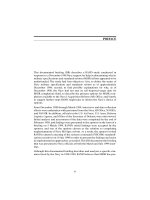

![picture yourself building a website with joomla! 1.6[electronic resource] step-by-step instruction for creating a high-quality, professional-looking site with ease](https://media.store123doc.com/images/document/14/y/ob/medium_oby1401382455.jpg)
